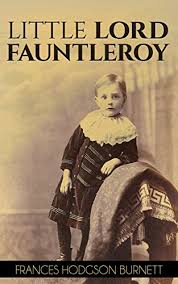Children’s Favorites
Listen to the Recess! Clip
| Author | Rita Smith |
| Air Date | 12/6/2006 |

Children’s Favorites Transcript
These days, a stroll past the desk in the children’s department of any public library will provide you with a list of “Best Books for Young Readers” or a few minutes spent online will lead to an abundance of good reading lists for children compiled by teachers, editors, librarians, book dealers, or reviewers, all knowledgeable people who have children’s best interests at heart when making recommendations. But in September 1902, St. Nicholas Magazine for Boys and Girls issued a call for their young readers to recommend the best books for children under ten. “Here is an opportunity,” the editors wrote, “for older brothers and sisters to … act as guides to lead the tiny feet in paths of pleasantness and to save them from boggy and briery patches in the great Reading Land.”1 The only stipulation was that they couldn’t recommend Mother Goose, the Brothers Grimm, or Hans Christian Andersen since everyone already knew about fairy tales and nursery rhymes.
The January 1903 issue carried the tabulation of the book lists indicating what children consider the best books for little ones. The book receiving the highest number of votes was Frances Hodgeson Burnett’s Little Lord Fauntleroy followed very closely by Lewis Carroll’s Alice in Wonderland, the little lord beating the little lady by only one or two votes. Next came Hawthorne’s Wonder Book, followed by The Bird’s Christmas Carol by Kate Douglas Wiggin, Ernest Seton’s Wild Animals I Have Known, Kingsley’s Water Babies, Kipling’s Jungle Books, Anna Sewell’s Black Beauty, and Joel Chandler Harris’ Nights with Uncle Remus.2
If the test of a book is its longevity, then the children made good choices. All of these books are still in print. Alice, Lord Fauntleroy, and The Wonder Book were all popular classics by 1902, having been published at least 15 years earlier, and animal stories like Black Beauty and Wild Animals I Have Known are always appealing, but I think a child reading these today would find themselves getting dangerously close to those “boggy and briery patches.” Most of these books would be difficult reads for a five to ten year old, even if the content interested them. They demand a lot from the reader, or the listener if the story is being read, not the least being a sustained attention over the course of 250-300 pages. Water Babies, for example, is a rip roaring story for about the first 40 pages, then gets tangled up in a lot of theological, philosophical digression. And it takes some heavy slogging to get through the boggy Bird’s Christmas Carol, a sentimental tale in the 19th century tradition of an angelic child too good to live. But these were the children’s choices, and credit has to be given to editors of St. Nicholas for handing the responsibility of evaluating books for children to the children themselves, empowering them by saying, “Here, you choose.”
Sources:
1 St. Nicholas Magazine. September, 1902, p. 1053.
2 St. Nicholas Magazine. January 1903, p. 284-285.